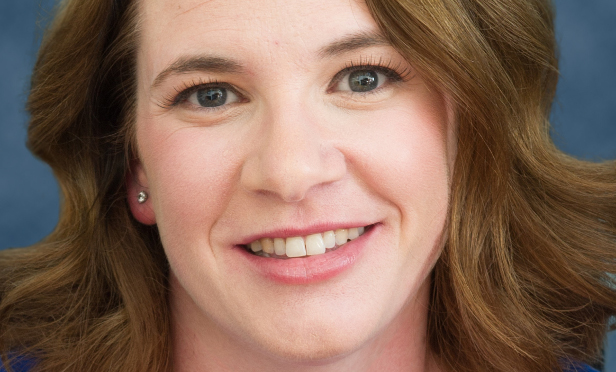 Riley: “If you’re looking for land development, the fact that jurisdictions don’t quite know what they’re doing is scary to investors.”
Riley: “If you’re looking for land development, the fact that jurisdictions don’t quite know what they’re doing is scary to investors.”
SAN DIEGO—Since the Newhall Ranch case, every jurisdiction in California is still figuring out how to analyze greenhouse gases, and until San Diego County develops a universal process, investors will be skittish, Allen Matkins partner Heather Riley tells GlobeSt.com. Riley was one of the recently appointed senior real estate executives to the Policy Advisory Board at the Burnham-Moores Center for Real Estate within the University of San Diego’s School of Business.
The PAB provides policy guidance and financial support to the BMC and real estate students at USD. The newly appointed members included Riley, a partner in Allen Matkins’ San Diego office; Willy Ayyad, president & CEO of United Development Group; Chris Bourassa, president of US construction of the Ledcor Group of Cos.; Tim Meissner, principal of Meissner Jacquét Real Estate Services; and Dan Ryan, EVP–regional market director (San Diego) and strategic operations for Alexandria Real Estate Equities Inc. According to Stath Karras, executive director of the BMC and staff liaison of the PAB, “These distinguished members of the real estate industry bring exceptional talent and expertise to our committee and will provide expert guidance to our real estate students and to the BMC.”
Riley’s practice focuses on a variety of land-use and environmental matters, with a particular emphasis on writ litigation. She has extensive experience with the California Environmental Quality Act and has defended numerous private clients and public entities in land use and environmental actions in both state and federal courts. We spoke with her about her new appointment to the PAB and about land-use issues in San Diego.
GlobeSt.com: What are your goals as a board member for the BMC’s PAB?
Riley: One of the first things I got to do as I officially joined the board was to attend the BMC’s Annual Real Estate Conference, and I thought they did a phenomenal job. Art Laffer was an excellent speaker—very engaging—and so was Spencer Levy. One of the benefits of being on the PAB was a sneak peek with the speakers, and it was also a wonderful intro to the other board members, a chance to say hello and hear a little bit of a preview. So, I’m seeing how well they do now, and I want to add to that. The Women in Real Estate side of PAB is beginning to plan out the fall conference, and PAB members get good input. There’s an awful lot of opportunity there to expose attendees to a different side of real estate. Women do the same jobs as men, but we may think of things a little differently, so this is a cool opportunity available to me and other female members of the PAB to direct them to potential speakers.
GlobeSt.com: What can be accomplished this year to reform CEQA and ease the burden on developers trying to get needed projects through?
Riley: I attended the NAIOP Lunch with the Mayor recently, and he talked about CEQA reform, and the answer was funny. People involved in CEQA reform were there—people who sit in rooms with the governor and the lobbyists who give those briefings. We have been trying for CEQA reform for so long. The will is there, but there’s also fear of change. No one knows what’s happening on a federal level. Everyone is focused on affordable housing, so the only type of CEQA reform we’ll see now is in that category; there’s streamlining in that area. Everyone is talking about CEQA, so it will be interesting to see if it will happen. Mayor Faulconer is seeing what they can do in San Diego with regard to a program-EIR-level review to those community plans. This means any proposed development that fits into those plans can do what everyone else who has been approved can do; there’s a form your staff fills out, and then you move forward. If we could do that in Mission Valley, Kearny Mesa and other San Diego markets, it would make investors a lot more comfortable moving forward.
GlobeSt.com: Which land-use issues are most pertinent to San Diego?
Riley: The biggest issue is how to analyze greenhouse gases. Every jurisdiction is still trying to figure this out since the Newhall Ranch case. Depending on where your project is in San Diego, each town has a checklist for putting it through the process. They want it done; they have a system that’s reliable and know it works. Carlsbad just put out a checklist. But the County is really struggling to figure out how they’re going to approve projects. If you’re looking for land development, the fact that jurisdictions don’t quite know what they’re doing is scary to investors. Each project may have to go its own way. It’s a very good idea that isn’t yet being implemented in the best way yet.
GlobeSt.com: What else should our readers know about the PAB?
Riley: I’m excited, and I’m hoping to get a chance to actually work with students. I met a few of them recently at the BMC conference I’d like to do more than just advisory. It’s hard to do mentorship when it’s not organic, but I hope we can. I’m hoping I get to talk to them more and that I actually get to use that on the board.
















 Copyright © 2024 ALM Global, LLC. All Rights Reserved.
Copyright © 2024 ALM Global, LLC. All Rights Reserved.